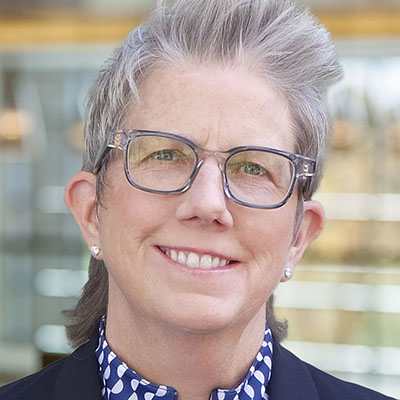Episode 40: Willie Chan on Building Sales Empathy from a Marketing Perspective
4.1K Views | 11 Min Read
Shawnna Sumaoang: Hi, and welcome to the Sales Enablement PRO podcast. I am Shawnna Sumaoang. Sales enablement is a constantly evolving space, and we are here to help professionals stay up to date on the latest trends and best practices so they can be more effective in their jobs.
Thank you so much for joining us today. I would love for you to take a moment and just introduce yourself, your title, and your organization.
Willie Chan: Hi, my name is Willie Chan. I am a member of the corporate digital marketing team at Renesas Electronics in Silicon Valley. My primary focus within the group is to enable sales, from the digital demand creation point of view primarily. However, I’ve kind of taken it upon myself to also look at all aspects of sales enablement to address any areas of resistance in their sales process.
For our listening audience, I should state that the opinions that I’m about express are mine alone and do not necessarily reflect those of Renesas Electronics.
SS: Excellent. So, tell us a little bit about your experience in sales enablement. How long have you been doing enablement and how did you get to where you are today?
WC: So, I started my career during the “dot com” bubble period as a product marketer for Analog Devices. From the very beginning, I was given a product line and a soft revenue target. For those that aren’t familiar with Analog Devices, it’s a large semi-conductor supplier with multiple product lines. And I knew from the very beginning I needed to find a way to stand out above the noise, with my own salespeople across the globe, to get an unfair share of mind with them if I were to achieve my revenue target. So, I decided early on that practicing sales empathy would be my initial tactic. And this was many, many years ago. At that time, for me, it meant establishing clear, honest, and timely communication with the sales and application engineers to build trust.
I sensed the biggest fear of a salesperson was not necessarily losing a deal, it was
losing the trust of a customer. And being out in the field, I knew each sales representative is in a
precarious position, completely reliant on their colleagues back at headquarters in development, marketing, logistics, etc. to deliver on what they promised. Therefore, I made sure that those fears never crossed the minds of the salespeople. I like to think this philosophy led me to earn Analog Devices’ European Sales Award and the resulting bookings exceeded my soft revenue target.
SS: Those are impressive results. So, obviously you come from a little bit of a unique background, Willie, as a marketer with product marketing experience. Why do you think that background brings a lot of value as a sales enablement practitioner?
WC: So, I think product marketing, or marketing in general, and sales enablement really go hand-in-hand. The whole purpose of marketing is to enable and empower the sales organization to be productive – bringing in profitable revenue. So beyond looking at suitable growth opportunities and communicating a penetration strategy, a marketer must maintain a relationship of relevance with sales, much in the same way sales has to maintain a relationship of relevance with customers, and the customer has to maintain a relationship of relevance with their end customer and so on, the chain continues. Empathy and trust are necessary ingredients. It genuinely shocked me when I learned that it is not uncommon for marketing and sales point fingers at each other when shortfalls occur – that’s a terrible dysfunctional relationship.
I think marketers bring the unique value of a broader view of the customer base across geographies, company sizes, industries, and sales channels, and so communicating with the sales teams servicing the full variety of markets gives the marketer information on what is required to be successful in all those areas. And when I was generating customer-facing collateral, I was really passionate about details — their clarity, completeness, and accuracy which drives what we now call “sales velocity”. That is, fewer questions from the customer a lower level of effort from sales, and a shorter timeframe available for competitive counterattacks. And I still pay close attention to those important details today.
Now ultimately, a good product marketer is similar to a salesperson. They’ve got to pitch to and advise their internal customer, the sales teams, how they will achieve their targets, their relevance to stakeholders, more easily by selling their product line as opposed to another. And I find success to be the best motivator.
SS: Absolutely. For someone who doesn’t have a sales background and wants to transition into sales enablement, what advice do you have for how they can best prepare for that position?
WC: In my opinion, time is the most precious and equitable commodity. Old or young, rich or poor, we all have 24 hours in every day. Salespeople are particularly challenged with how to best allocate that time to achieve their goals. So, I suggest starting by building and improving sales empathy under the theme of time. Ask what tasks they find an inefficient use of their time, observe the process if you can, and discuss how you might help. After your first success, use it as a case study for sales members and before you know it, you’ve established a relationship of relevance with sales, proactively calling you for assistance in other areas.
Above all, don’t wait for the title of sales enablement to be bestowed upon you. If you’re interested, find a way to allocate some time to jump in.
SS: I think that’s great advice. How do sales enablement and marketing complement each other and work better together?
WC: I was recently reminded that Steve Jobs said back in 1997, and I’m summarizing here, “It’s a very noisy world and so we have to be really clear on what we want them to know about us.” That remains true today. Marketing has the responsibility to define and deliver a cohesive, company-wide message, consistent with the organization’s brand, whatever that might be. The sales group must be enabled and empowered to reinforce that message with the customer.
There is an industry-wide statistic which says an audience needs to see a marketing message an average of seven items before it sinks in. When I was younger, I watched my girlfriend who was in retail at that time implement the store-front displays exactly as prescribed by corporate. Most people do not notice or take the consistency of execution for granted, and until that moment that included me too. The experience left a big impression on me on the importance of sales alignment.
While Sales enablement’s primary goal is to improve the sales productivity, part of that task that should not be overlooked is to facilitate a convenient, closed-loop feedback channel from sales back to marketing. What’s working? What’s not? As a product marketer I always felt frustrated that I had no visibility into how the white papers, press releases, case studies, PowerPoint presentations, web pages, that I was building, had any impact on my business. Yes, I had a few conversations here and there with sales, but never a complete view. How could I improve the message, target, delivery and/or tactics, etc. as opposed to repeating the same process over and over because that’s just the way it is or what was expected by management?
SS: I couldn’t agree more. Coming from a marketing background myself, I have felt that black hole that comes from tossing things over the fence to sales. I think that you are absolutely right, that’s where sales enablement and marketing become very close counterparts, because they help ensure that those things really land with the sales reps.
WC: Yeah, we want to make sure that things are resonating and they’re working.
SS: I couldn’t agree more, Willie. Do you have a couple examples of how you’ve worked to build sales empathy with the reps within your organization so that they know that you feel their pain and the challenges that they’re facing on a day-to-day basis?
WC: I think a lot of it goes back to having conversations with your sales teams. I don’t know if I mentioned earlier, I sit with my sales colleagues, we’re in the same kind of cubicle form. And I overhear their pain points. I think to develop sales empathy, you really do need to sit with them, you need to communicate with them constantly about how things are going. And see if you can get an opportunity to move your desk, if you’re not already there, closer to them. Watch how they’re spending their time, see what their complaints are, what their challenges are, just proactively reach out and say, “hey, we’re in this together, we’re a company, we’re a team, let’s go out there and win together. How can I help?”
I don’t think salespeople are shy about that. They’re willing to have conversations with their colleagues. They are always looking for help because, again, they’re out there by themselves or a little bit alone out there. So, understanding how the company can support them and make them feel supported is huge.
SS: That is absolutely true. Thank you, Willie. I greatly appreciate your time today and hearing a little bit about sales enablement from the perspective of someone with a marketing background. Thank you so much for joining us today, I really appreciate your time.
WC: Thank you for having me, and I appreciate it
SS: Thanks for listening! For more insights, tips, and expertise from sales enablement leaders, visit salesenablement.pro. If there’s something you’d like to share or a topic you want to know more about, let us know. We’d love to hear from you.












